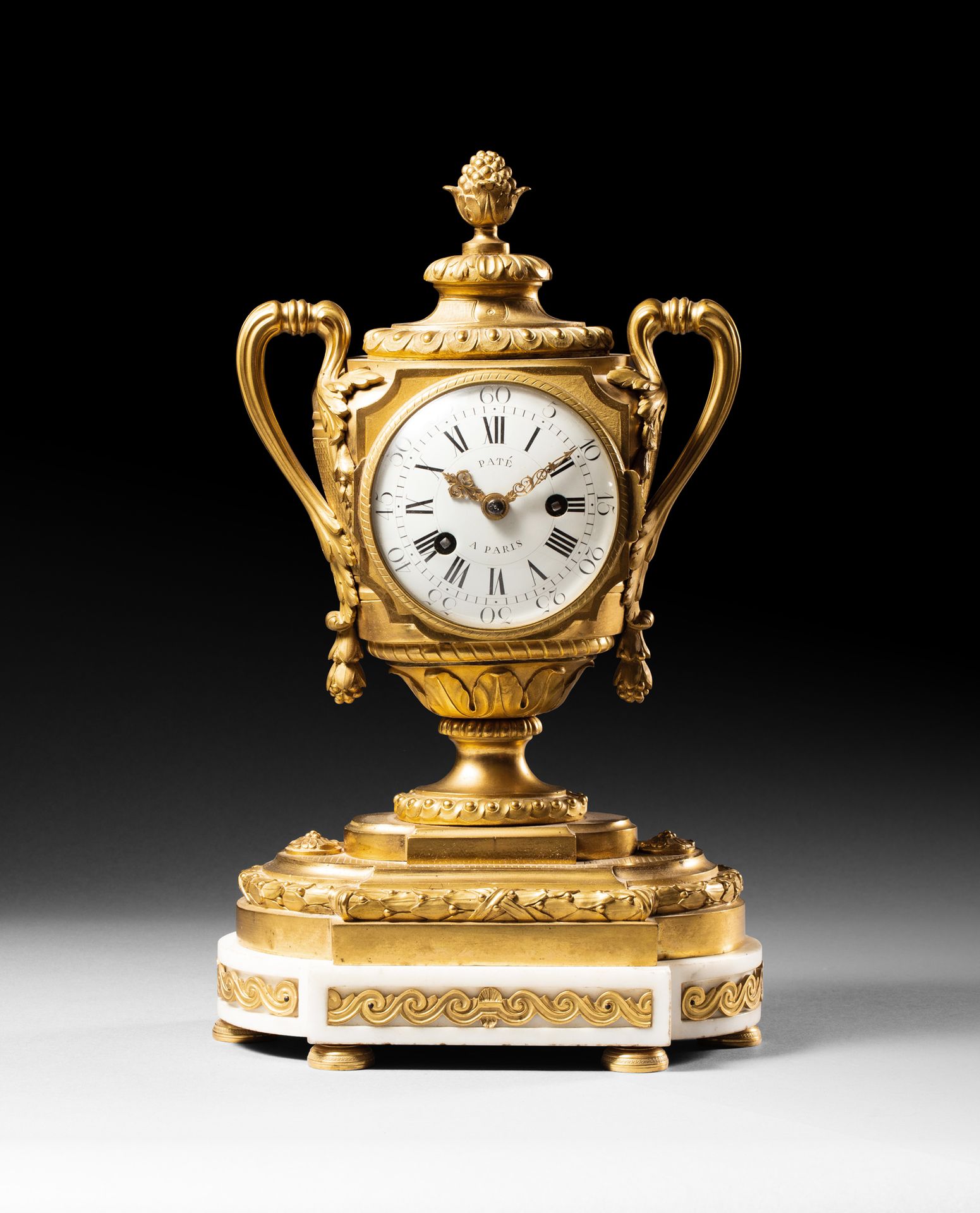Description
Rare and important clock in chased and gilded bronze. Vase model. Pebble feet and white marble base edged with a frieze of gilded bronze posts. It is surmounted by an architectural terrace, bordered by a large laurel spiral, the pedestal with interlacing frieze. The white enameled circular dial with Roman and Arabic numerals is signed, as is the movement, "Paté à Paris". It is flanked by two handles ending in foliage and topped by a seeded fruit. The clock is signed on the terrace "OSMOИD" Robert Osmond (1711-1789). Thomas Paté, clockmaker on rue des droits de l'Homme in Paris until the early 19th century. Died in 1805. Late 18th century. H. 47 cm - W. 28 cm - D. 18 cm (Bezel attached). This "vase" model is reminiscent of the "Greek taste" that was very much in vogue at the end of the 18th century, and from which Robert Osmond drew much of his inspiration. A similar model is illustrated in H. Ottomeyer and P. Pröschel, Vergoldete Bronzen, Die Bronzearbeiten des Spätbarock und Klassizismus, Volume 1, Munich, 1986, reproduced page 196 - 197, fig.3.13.1. Expert: Cabinet Martel et Lencquesaing
86
Rare and important clock in chased and gilded bronze. Vase model. Pebble feet and white marble base edged with a frieze of gilded bronze posts. It is surmounted by an architectural terrace, bordered by a large laurel spiral, the pedestal with interlacing frieze. The white enameled circular dial with Roman and Arabic numerals is signed, as is the movement, "Paté à Paris". It is flanked by two handles ending in foliage and topped by a seeded fruit. The clock is signed on the terrace "OSMOИD" Robert Osmond (1711-1789). Thomas Paté, clockmaker on rue des droits de l'Homme in Paris until the early 19th century. Died in 1805. Late 18th century. H. 47 cm - W. 28 cm - D. 18 cm (Bezel attached). This "vase" model is reminiscent of the "Greek taste" that was very much in vogue at the end of the 18th century, and from which Robert Osmond drew much of his inspiration. A similar model is illustrated in H. Ottomeyer and P. Pröschel, Vergoldete Bronzen, Die Bronzearbeiten des Spätbarock und Klassizismus, Volume 1, Munich, 1986, reproduced page 196 - 197, fig.3.13.1. Expert: Cabinet Martel et Lencquesaing
